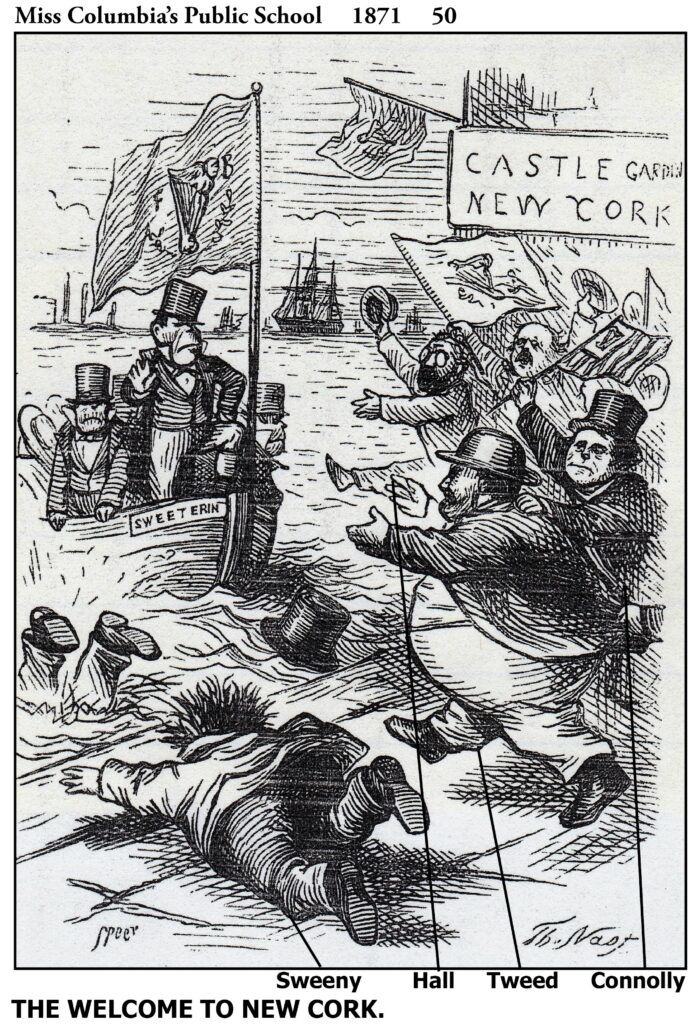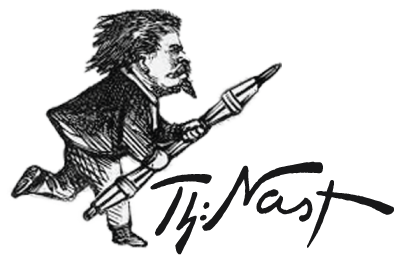
Miss Columbia’s Public School – 1871
Tammany Hall — named after Tamarend, a Delaware Indian chief — began as a patriotic social organization prior to 1800, but soon became a Democratic political club whose support and tactics often decided New York City elections. As the number of poor, uneducated Irish immigrants — many speaking only Gaelic — surged in the middle of the century, they had no social network to turn to other than family, friends and Tammany Hall. Tammany mobilized them via patronage; employment as laborers and clerks; public works; real estate for parochial schools, churches, orphan asylums and hospitals; education subsidies; and, of course, sinecures, graft, violence and fraud.
After Tweed consolidated power in 1863, he had the unqualified John McCunn elected judge by having his electoral counters increase McCunn’s ballot box totals and decrease his opponents’. George Barnard, a Yale graduate and Tammany politician, who would play a critical role in both the Ring’s maintenance and its fall, was elected judge in 1862. Albert Cardozo, father of future Supreme Court Justice Benjamin Cardozo, was Tweed’s third corrupt judge. The new Boss became Deputy Street Cleaning Commissioner, which gave him patronage authority to employ thousands of Irish laborers.
From 1860-1867, average immigration to America from all countries was under 9,000 annually. In October 1868 alone — with the critical election coming up — McCunn, Barnard and Cardozo naturalized 57,000 new citizens (out of 60,000 for the entire year). As the Tribune noted and Harper’s portrayed in a non-Nast cartoon: “McCunn manufactures citizens at the rate of 480 an hour.” Almost all of the October immigrants were Irish.
The three requirements for citizenship included: age 21, arrival before age 18, and residency for five years. The crooked judges accepted blatantly false statements from lying applicants and witnesses who swore they met the legal requirements.
The scheme, however, went much deeper, encompassing thousands of imaginary Irish applicants, who were vouched for by the same Irish witnesses on the Ring’s payroll, using phony names and addresses. Separately, the Ring provided blank Certificates of Naturalization, face-down in bulk, no questions asked, with names and addresses filled in later. Tweed’s judges stamped them approved, sight unseen. District Attorney Hall ordered the election inspectors to accept these certificates as “conclusive evidence of the right of such person to vote.”
Nast captured the scenario best in an illustration for his 1871 book entitled Miss Columbia’s Public School. The four Ring leaders were rushing out to greet the arrogant immigrants from “Sweet Erin” and welcome them to New Cork.
